Fertilizers and organic or inorganic substances containing chemical elements improve plants’ growth and soil fertility. However, organic fertilizers (Manure) contain relatively low amounts of nutrients. The nutrients in inorganic fertilizers come from inorganic salts extracted through chemical or physical processes. Potassium, Nitrogen, and phosphorus are plants’ three most important nutrients.
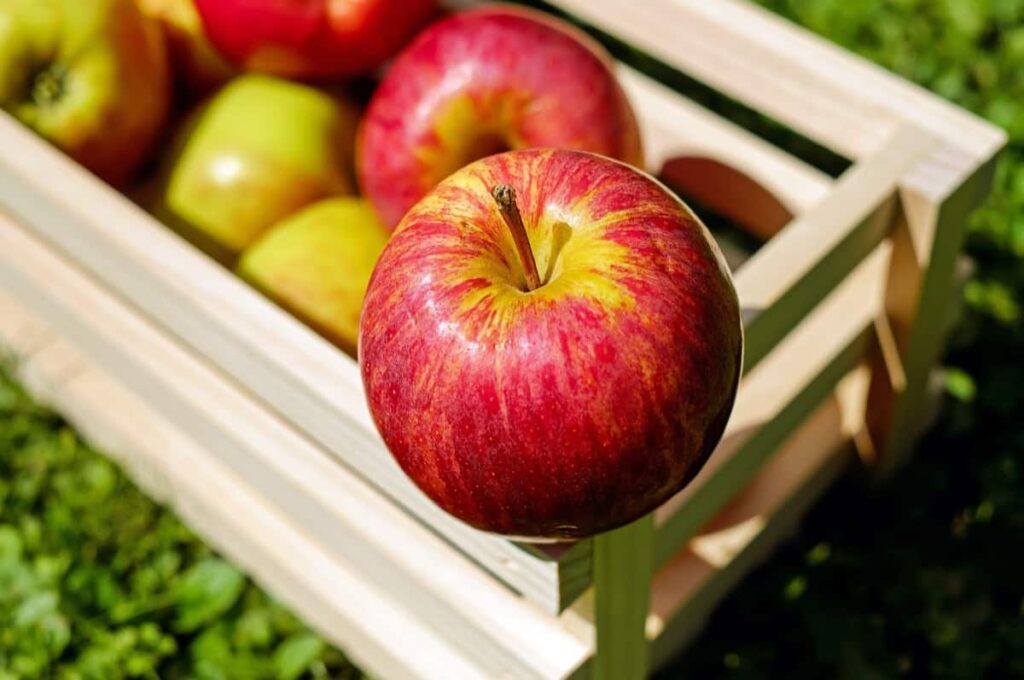
Manures and fertilizers should be applied at the right time and in the right manner to get the maximum benefit, but other factors should also be considered. Different fertilizers react differently with soil, for example. Similarly, different crops require different amounts of N, P, and K, and even the same crop requires different amounts of nutrients at different stages of development. Therefore, fertilizer application involves the following considerations:
- Availability of nutrients in manures and fertilizers
- Various stages of crop growth require different nutrients.
- Time to fertilizer application.
- Methods of application, selection of fertilizers
- Crop response to fertilizer application and N, P, and K interaction.
- The residual effect of manures and fertilizers
- Crop response to various nutrient carriers.
- The unit cost of nutrients.
Fertilizer schedule for fruits
Organic fertilizers
Organic fertilizers are derived from mined rock minerals and natural plant and animal materials. Carbonic compounds play a key role in soil enrichment due to their role in plant growth. The organic type increases the organic matter content of the soil. Furthermore, this fertilizer improves soil characteristics and facilitates microorganism reproduction. You can obtain organic fertilizers from the following sources:
- Agricultural waste
- Industrial waste
- Livestock manure
- Municipal sludge
In case you missed it: Fertilizer Schedule for Vegetables: Organic, Chemical, How and When to Apply
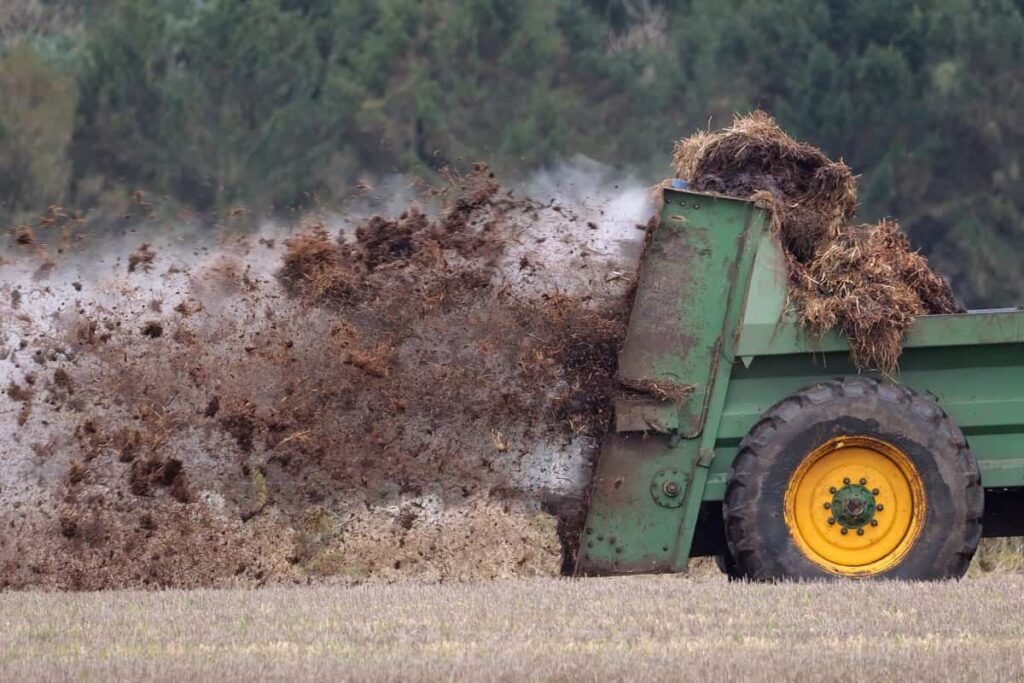
List of organic fertilizers
Alfalfa Meal (NPK Ratio: 2-0-1)
As part of livestock feed, alfalfa is commonly used as an organic fertilizer. On the other hand, an Alfalfa meal is a natural fertilizer ground up so that it breaks down more quickly. Additionally, this organic fertilizer contains low levels of Nitrogen, phosphorus, and potassium. Compared to other organic fertilizers, alfalfa meal improves plant health at a moderate rate. These are best used as soil conditioners before planting fruit crops in early spring.
Rock Phosphate (NPK Ratio: 0-3-0)
Rock phosphate is made by grinding up rocks. There is a large amount of phosphate, along with other essential nutrients. Water doesn’t dissolve the elements of this fertilizer, which is its main advantage. You can apply rock phosphate in the planting hole for transplants and trees or incorporate it into the soil before planting.
You can apply it after aerating established landscaping, lawns, and trees or top dress and rake it into the soil. For soil with adequate phosphorus, use 2.5 kg per 100 square feet, and less for soil with low phosphorus levels. Depending on the size of the plant, use 450 grams to 4.5 kg per planting hole for trees and transplants.
Cow Manure (NPK Ratio: 0.5-0.5-0.5)
The mass-to-nutrient ratio of animal waste is generally high. Despite this, it contains respectable amounts of Nitrogen, phosphorus, and potassium. Also known as cattle manure, cow manure works on fields at a moderate rate. All of these elements contribute to its excellent performance as a compost additive.
It is possible, however, for some weed seeds to survive being digested by cows, which can cause obvious problems. Because manure leftover from industrial operations contains so much salt, it’s best to avoid it. If fresh manure is not composted enough, it has too much plant nutrition and can burn roots.
In case you missed it: How to Start Polyculture Fish Farming In India: Composite Fish Culture, Mixed Fish Farming Examples, Benefits, and Disadvantages
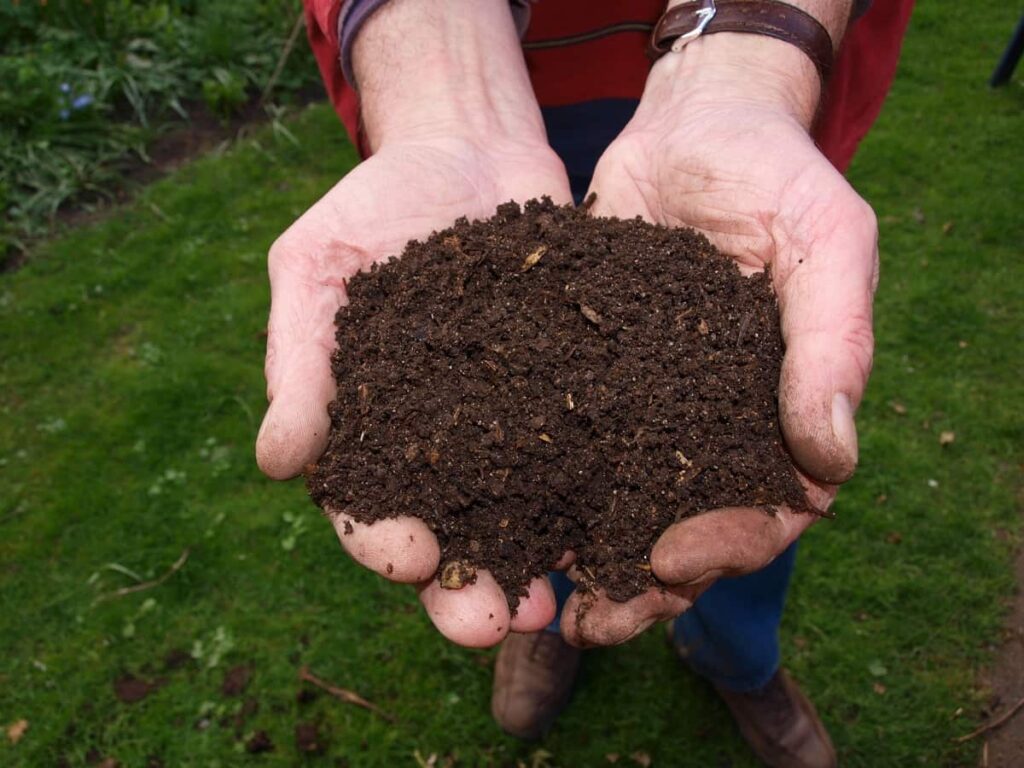
Chicken or poultry manure (NPK Ratio: 5-3-2)
Chicken manure or poultry crap doesn’t automatically mean high levels of nutrients. However, poultry or chicken manure contains slightly more of the three main plant nutrients than cow dung. Organic fertilizers with high nitrogen content are often considered the best. Moreover, it works a little faster. After harvesting your crops or before you begin another crop cycle is the best time to use poultry or chicken manure. Chicken manure, turkey manure, or fowl manure can burn your plants if you apply too much, just as cow manure can.
In case you missed it: Farming Business Plan PDF: for Poultry, Livestock, Agriculture, Horticulture, Greenhouse, and Hydroponic
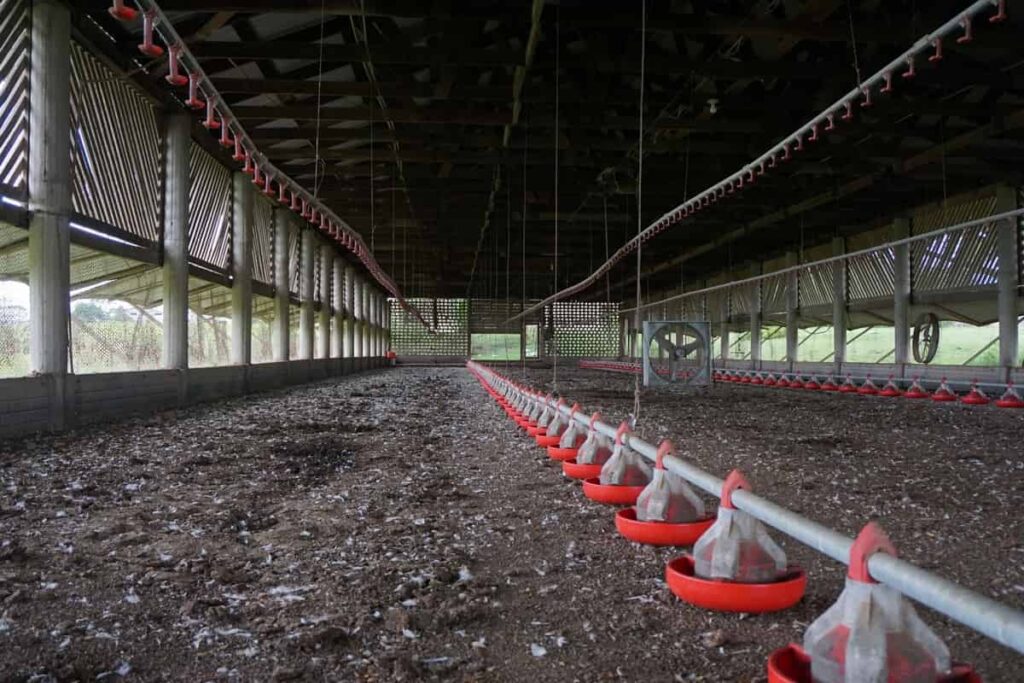
Earthworm Castings (NPK Ratio: 2-1-1)
There is a decent amount of all three vital nutrients in earthworm castings. In addition, this fertilizer increases soil aeration and nutrient availability, making it an excellent addition to fruit crops. Not only can this fertilizer be used on nearly any plant, but it can also be applied directly to plants without burning them. Various methods of applying worm castings manure can be used, including top dressings, side dressings, and work-ins.
Blood Meal (NPK Ratio: 12-1.5-0.5)
A blood meal is a fertilizer made from the powdered blood of butchered livestock. However, blood meal has a low level of other elements despite its high nitrogen content. In addition, too much is likely to burn plants if too much is used at once. You should therefore proceed with caution.
Applying a blood meal to the soil is best before planting anything. However, blood meal has the advantage of being a fast-acting tonic for sick plants. Depending on the package directions, you will need to apply this fertilizer over the roots of the plants and possibly cover everything with mulch.
Bone Meal (NPK Ratio: 4-20-0)
Ground-up cow bones make up bone meal, which is no surprise. In addition to being high in phosphorus, this fertilizer is also high in Nitrogen. As well as encouraging flower production, it promotes root growth at moderate speeds. Therefore, it is excellent for flowering plants, bulbs, and fruit trees. However, it is primarily used as a soil amendment in places with high nitrogen levels where plants are frequently burned. If applied correctly, it can sometimes be a better plant food than those made from synthetic chemicals.
Fish Emulsion (NPK Ratio: 2-4-0 to 5-1-1)
Fish that have partially decomposed is used to make this product. Because of this, it often has a fishy odor. The nitrogen content of fish emulsion fertilizer is high, but it does not contain calcium or potassium. It should also be used lightly to avoid burning plants as it is very acidic. In leafy species suffering from low nitrogen levels, it is an effective treatment for increasing organic matter. It may not be tolerated well by some plants, however.
Chemical fertilizers
A chemical fertilizer is any number of synthetic compounds created specifically to increase crop yields. A nitrogen-containing chemical fertilizer, for instance, can contain Nitrogen, while a phosphate-based chemical fertilizer can contain phosphates. Fertilizers such as potassium are also available.
In case you missed it: Fertilizer Schedule for Vegetables: Organic, Chemical, How and When to Apply
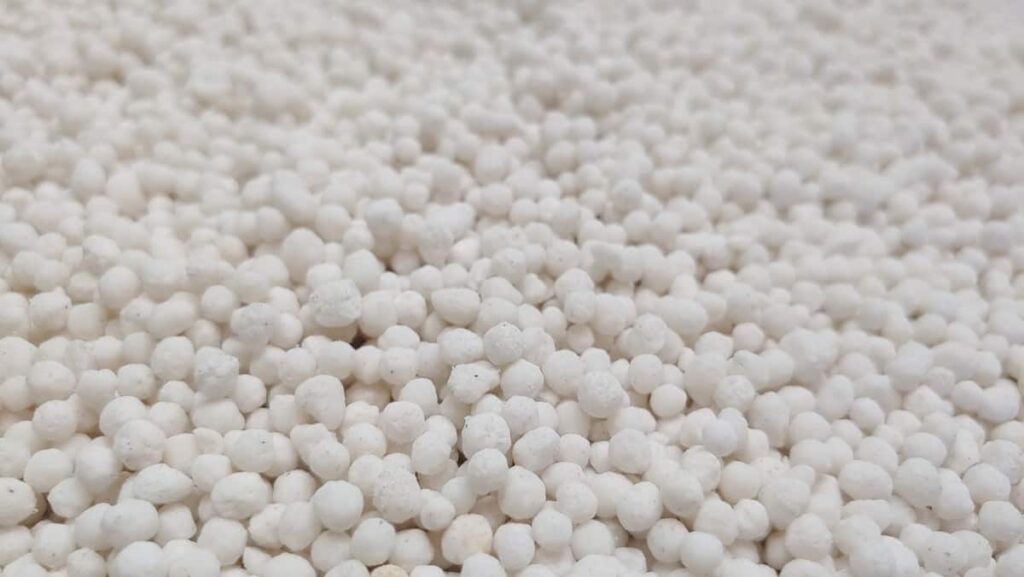
Nitrogenous fertilizers
Nitrates (NO3) and ammonia (NH4) are the forms of Nitrogen absorbed by the roots of plants. While most crop plants prefer Nitrogen in nitrate form, paddy and a few other higher plants prefer Nitrogen in ammonia. However, Nitrogen in the ammonical form can easily be converted to Nitrate in the nitrate form. Nitrogen is present in Urea as amide, but it is rapidly converted into ammonia and then to Nitrate by soil microorganisms. These four nitrogenous fertilizers are classified according to the forms of Nitrogen they contain
- Nitrate Fertilizers: Sodium nitrate (16% N), Calcium nitrate (15.5% N), and Potassium nitrate (13% N)
- Ammonium Fertilizers: Ammonium sulfate (20% N), Ammonium chloride (24-26% N), Monoammonium phosphate (11-20% N), Diammonium phosphate (18% N), and Ammonium solution (20-28% N)
- Nitrate and ammonium fertilizers: Ammonium sulfate (26% N), Calcium ammonium (26% N), Ammonium nitrate (33% N)
- Amide fertilizers: Urea (46% N)
Phosphatic fertilizers
The transfer of energy within plants relies heavily on phosphorus. Among other physiological processes, photosynthesis depends on it. It is essential for the development of the plant body. Phosphorus is the second most deficient primary nutrient in Indian soils after Nitrogen. It is essential for plants in good quantities, which the soils cannot provide without external supplementation. Plants can hardly absorb fertilizers with phosphorus in more than 15-20 percent of their total dosage. Plant roots cannot access the remaining phosphorus because it is fixed in the soil.
- Calcium dihydrogen phosphate (26% P)
- Ammonium phosphate (20% P)
- Ammonium hydrogen phosphate (53% P)
Potassium fertilizers
Potassium fertilizers are organic substances containing potassium that provide plants with nutrition. To improve crop productivity consistently, potassium nutrition is crucial. Plants use potassium primarily to improve soil, air, and water relations; it activates enzymes and helps move carbon from biomass to reproductive material (grain, fruit, and fiber). On the other hand, potassium deficiency leaves the plant more susceptible to various stresses, such as water shortage, insect pressure, and pathogen pressure.
- Potassium chloride (50-50% K)
- Potassium sulfate (60-62% K)
- Potassium nitrate (39% K)
Important chemical fertilizers
Ammonium sulphate [(NH4)2 S04]
- Among the crops it is used for are paddy, potato, and other crops that require nitrogenous fertilizer to grow well.
- Almost 25% of the ammonia in this fertilizer is converted into Nitrate by the denitrifying bacteria in the alkaline soil.
- Plants can easily absorb nitrates from the soil since they are water-soluble.
Calcium Ammonium Nitrate [Ca (N03)2 NH4NO]
- Plants directly absorb this nitrogenous fertilizer. With this fertilizer, there is no question of pollution as the nutrients are directly absorbed by water.
Super Phosphate of lime [Ca(H2PO4)2]
- Calcium dehydrogenate phosphate and Gypsum are mixed homogeneously.
- The fertilizer’s reactive component is calcium dehydrogenate phosphate, which is water-soluble.
Urea (H2NCONH2)
- Due to its high nitrogen content (46%N), Urea is the most important nitrogenous fertilizer.
- Besides its use in crops, it is also used as a cattle feed supplement to replace a portion of the protein requirement. Urea, however, may volatilize if applied to bare soil surfaces due to its rapid hydrolysis of ammonium carbonate.
- There are several compounds called urease inhibitors that can alter Urea’s hydrolysis.
- When added to soil, these inhibitors inactivate the enzyme and prevent rapid hydrolysis of Urea.
- If large quantities of Urea are placed with or too close to seedlings, the rapid hydrolysis of this material can also harm them with ammonia.
- This fertilizer is used while the seed is introduced into the soil, but it never comes into contact with it. Water is supplied three to four days after spreading Urea on the soil.
Calcium Cyanamid [Ca (CN) 2]
- Nitrolim (Calcium Cyanamide) is a chemical compound used in fertilizers. As a result, farmers can maximize profits by increasing yields.
- Plant growth is encouraged by the chemical’s breakdown into plant-friendly ingredients in the soil.
- Despite its name, this fertilizer is never used for crop growth but only before the seed is introduced into the soil.
Calcium nitrate [Ca (N03)2]
- It is a nitrogenous fertilizer in the market or commercially.
- It is called Narvegian saltpeter.
- It is also a double salt since it comprises two nutrients common in fertilizers: high in sodium.
Fertilizer requirements and schedule for fruit crops
Apple
- Method of application: Tree basins should be broadcast with fertilizers 30cm from the trunk up to the canopy drip line and mixed thoroughly.
- Time of application: Farmyard manure is applied during December- January along with a half dose of Nitrogen, a whole quantity of phosphorus, and potassium. The remaining half-dose of Nitrogen is applied after harvesting.
- Manurial Schedule: It requires 100 kg farm yard manure, 700g nitrogen, 350g phosphorus, and 700g potassium per plant per year
Mango
- Methods of application: A shallow ring is dug around the base of the tree in young orchards to apply fertilizer and manures to the tree. Under the canopy of old-bearing orchards, they are broadcast and thoroughly mixed into the soil 30-60 cm from the trunk.
- Time of application: Fertilizers and manures are applied in two split doses. At the onset of monsoon, the first dose consists of complete Nitrogen with half potash. With the second dose, farmyard manure, superphosphate, and half the potash are applied in September and October.
- Fertigation with water-soluble fertilizers: 75% RDF in the ratio 2-1-0 (July- August), 2-2-2 (September- November), 0-1-1 (December-January), and 0-0-2 (February-April).
Manure schedule
Age of the plant | Farmyard manure (kg) | Nitrogen (grams per plant) | Phosphorous (grams per plant) | potash (grams per plant) |
| 1-3 year | 5-20 | 50-100 | 40-80 | 100-120 |
| 4-6 year | 25-50 | 100-200 | 80-100 | 200-400 |
| 7-9year | 60-90 | 200-250 | 120-160 | 400-600 |
| Ten years and above | 100 | 250 | 160 | 600 |
Grapes
- Method of application: After pruning, the application is made in the soil. Depending on the vine’s age, the application depth is 15-20 cm and 45-60 cm away from the trunk.
- Time of application After mid-Feb: The manure application and a full dose of phosphorus, potassium, and half a dose of Nitrogen are carried out. After 60 days, the remaining dose of Nitrogen was administered.
In case you missed it: High Yield Hybrid Grapes Varieties in India: State Wise Varieties Cultivated
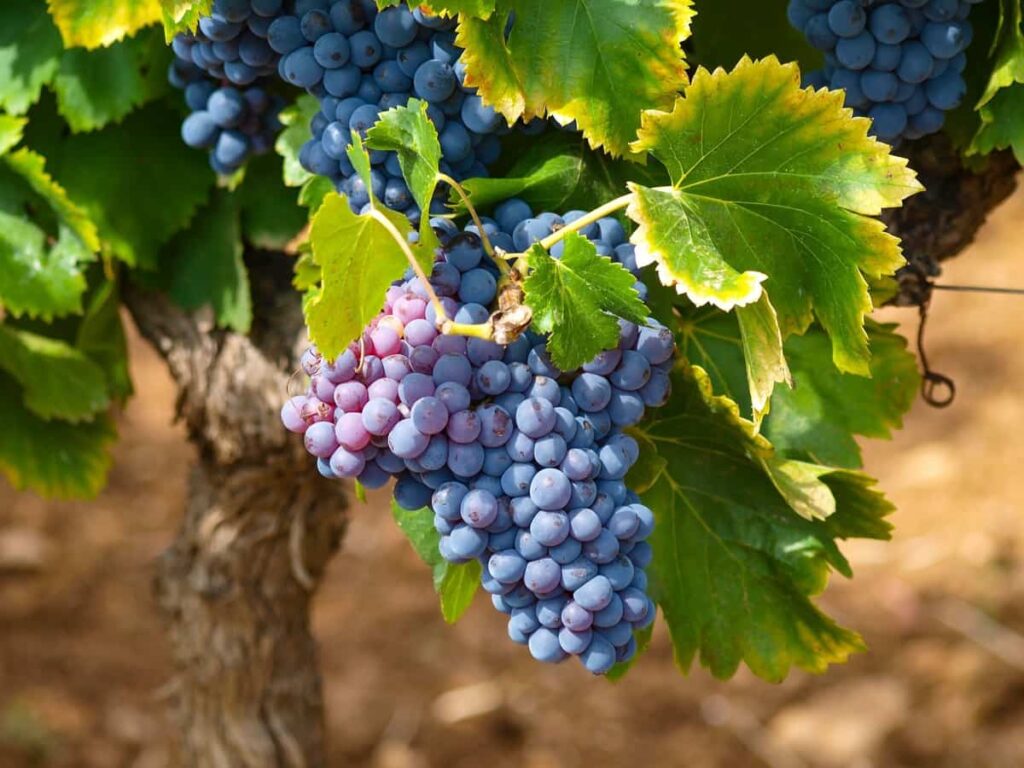
Manuring schedule
| Age ( year) | N (Gm/ vine) | P205 (Gm/vine) | K₂O (gm/vine) | Farmyard manure (Kg/vine) |
| 1 | 200 | 80 | 400 | 50 |
| 2 | 300 | 160 | 800 | 50 |
| Three and above | 400 | 240 | 1200 | 200 |
Citrus fruit plants
Method of application: Applying fertilizer in a circular band at a distance of 120 cm from the plant’s trunk is recommended. It is recommended to avoid the deep placement of fertilizers. For example, in sweet orange plantations, root activity was maximum within 25 cm of the surface, while in acid lime, 80-95% of root activity was found within 10 cm of the surface. Therefore, fertilizers are applied shallowly to the soil surface.
Time of application: In North India, manuring is performed in winter (Dec-Jan), and fertilization with ammonium sulfate is applied in April-May after fruit set. On the other hand, manuring is done in western and southern India before monsoon season. Therefore, December or January is also sometimes the time for the second application.
Manurial schedule
| Age (year) | Mandrain (Grams/ tree) | Acid lime (Grams /tree) | ||||
| N | P205 | K₂O | N | P205 | K₂O | |
| 1 | 300 | 70 | 80 | 375 | 150 | 200 |
| 2 | 600 | 140 | 160 | 750 | 300 | 400 |
| 3 | 900 | 210 | 240 | 1125 | 450 | 600 |
| 4 | 1200 | 280 | 320 | 1500 | 600 | 800 |
| 5 and above | 1500 | 350 | 400 | 1500 | 600 | 800 |
Banana
Method of application
- The roots can easily absorb potassium, phosphorus, and nitrogen fertilizers that are soluble after planting. There are many ways in which an application can be made;
- A soil application can be broadcast or localized. Rather than concentrating fertilizers around the pseudostem, banana roots ramify quickly away from it.
- Nutrition (Fertigation- fertilizer placement via irrigation) is most efficient since nutrients are applied directly to the root zone.
Time of application
- N should be applied as neem-coated Urea.
- A split of N & K applied at the 3rd, 5th, and 7th month of planting, and P at the third month.
- Bananas grown in tissue culture receive 50% more fertilizer at the 2nd, 4th, 6th, and 8th months after planting.
- For maximizing productivity, fertigation is recommended. Using water-soluble fertilizer, water 25 liters daily plus 200, 30, or 300 grams of N: P2O5 per plant.
- Plants require 10-15kg of farm yard manure, 100-200g of Nitrogen, 100-150g of phosphorus, and 200-300g of potassium each year.
Additional care
- For correcting the micronutrient deficiencies, Banana special, a micronutrient formulation developed by IIHR, consists mainly of six micro nutrients viz., zinc, iron, boron, copper, manganese, and molybdenum.
- And three secondary nutrients, viz., calcium, magnesium, and sulfur, are recommended as foliar spray from the 4/5th month of planting at the monthly interval on the whole plant till the bunch formation and after that, two sprays on the bunches.
- The spray solution is prepared by dissolving 75 g of banana special in 15 liters of water (about 12 kg/acre).
Sapota
Method of application: Applying fertilizer in a circular band at a distance of 120 cm from the plant’s trunk is recommended.
Manurial schedule
| Age (Year) | Recommended Fertilizers (RDF) (g NPK / plant/year) | Fertigation with water-soluble fertilizers | Biofertilizers /others | Farmyard manure | ||
| N | P | K | ||||
| 1-3 years | 250 | 125 | 125 | 40 kg/ plant 60% RDF in the ratio 2-1-0 (July- August) 2-2-2 (Sept- November, 0-1-1 (Dec-January) and 0-0-2 (February-April). | 300g Biofertilizer consortia | 40 t/ha |
| 4-6 years | 500 | 250 | 250 | |||
| 7-10 years | 1000 | 500 | 500 | |||
| 11 years | 1000 | 500 | 700 |
Papaya
| Recommended Fertilizers (RDF) (g NPK / plant/year) | Fertigation with water-soluble fertilizers | Farmyard manure | ||
| N | P | K | ||
| 250 | 250 | 500 | 100% recommended N and K through a drip (50 g N at 6.25 g/plant/week and 50 g K2O at 6.25 g/plant/week for two months), in addition to soil application of 50 g P2O5 in bimonthly intervals. | Ten t/acre 40 kg/ plant AMC Enriched farm yard manure at 5 kg/plant at planting and repeated at six months intervals at 2 kg/plant |
Guava
- Method of application: Guava is a surface-rooted tree; therefore, the manure should be evenly spread over the tree basin’s surface and dug in.
- Time of application: For taking Mrig Bahar, farm yard manure and fertilizers are applied during June, followed by irrigation.
Manurial schedule
Age (year) | N (Gm/ tree) | P205 (Gms/tree) | K₂O (Gms/tree) | farm yard manure (kg/tree) |
| 1 | 60 | 60 | 0 | 10 |
| 2 | 120 | 120 | 180 | 20 |
| 3 | 180 | 160 | 300 | 30 |
| 4 | 240 | 240 | 400 | 40 |
| 5and above | 420 | 420 | 600 | 50 |
Conclusion
Fertilizing fruit plants in spring at flowering is common. Once the foliage has dried, broadcast fertilizer over it and brush residual fertilizer off the leaves. It is important not to disturb plants’ shallow roots after they have been planted by working fertilizer into the soil. Winter damage occurs due to late summer and fall fertilization that interferes with the hardening-off process.
- How to Raise Pigs in Your Own Backyard: A Comprehensive Guide
- Budget Friendly Sheep Shed Ideas: Cheap and Low-Cost Tips
- How Much Do Cattle Farmers Make: Revenue Streams in Cattle Farming
- Management Pests and Diseases in Your Cotton Field
- Sheep Farming Business Plan for Beginners
- Aquaponic Farming at Home: A Step-By-Step Guide
- Profitable Village Farming Business Ideas in 2024
- High-Yield Aquaculture: Fast-Growing Fish for Farming
- Effective Fish Pond Construction Techniques for Beginners
- Irrigation and Water Management in Pineapple Farming
- Blossom to Harvest: Mastering Flowering and Pollination in Papaya Farming
- Pig Fattening Essentials: From Selection to Sale for Beginners
- Raising Wagyu Cattle: A Complete Guide for Premium Beef Production
- Soil Types and Their Water Holding Capacity
- Optimizing Irrigation Schedules for Coconut Groves for Enhanced Yield
- Espresso Your Garden: Coffee Grounds for Healthier Acid-Loving Plants
- The Best Soil Mix for Snake Plants: How to Mix Your Own Snake Plant Soil
- Green Thumb Success: Expert Tips for Cultivating Greenhouse Beans All Year Round
- Bloom All Year Round: The Ultimate Guide to Indoor Hyacinth Care
- Eco-Friendly Gardening: How to Make Liquid Fertilizer from Kitchen Waste
- Ultimate Guide to Grow Anise in Pots: Explore Seed Propagation to Harvesting
- Guide to Raising Chester White Pigs: Discover Breed Facts to Growth Management
- Mastering the Elegance: The Ultimate Guide to Weeping Cherry Tree Care, Planting, and Maintenance
- Ultimate Guide to Planting Garlic in Grow Bags: Growing Strategies for Beginners
- How to Fix Spider Plant Leaf-Related Problems: Natural and Organic Remedies
- 10 Reasons Why Your Tulsi Plant is Shedding Leaves: Home Remedies and Solutions
- Optimizing Growth and Yield: The Advantages of Palm Bunch Ash Fertilizer
- Utilizing Neem Oil Extract as a Natural Pesticide for Hydrangea
- From Soil to Harvest: Various Ways in Which Farmers Can Use AI Tools
- Steps to Encourage and Induce Citrus Flowers: A Comprehensive Guide
- How to Fix Snake Plant Leaf-Related Issues: Natural and Organic Remedies
- Transform Your Garden into a Fragrant Oasis with Raat Ki Rani (Night Blooming Jasmine)
- Discover the Ideal Chicken Breeds for Philippine Farms
- How to Create a Poultry Egg Farm Business Plan for Profits
- Grow Lemon Cucumbers Like a Pro: Insider Techniques for Bountiful Yields
- Ultimate Guide to Caring for Your Pink Princess Philodendron: Tips for Thriving Variegation
